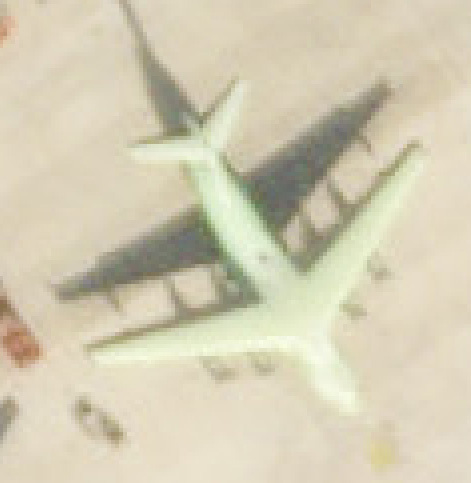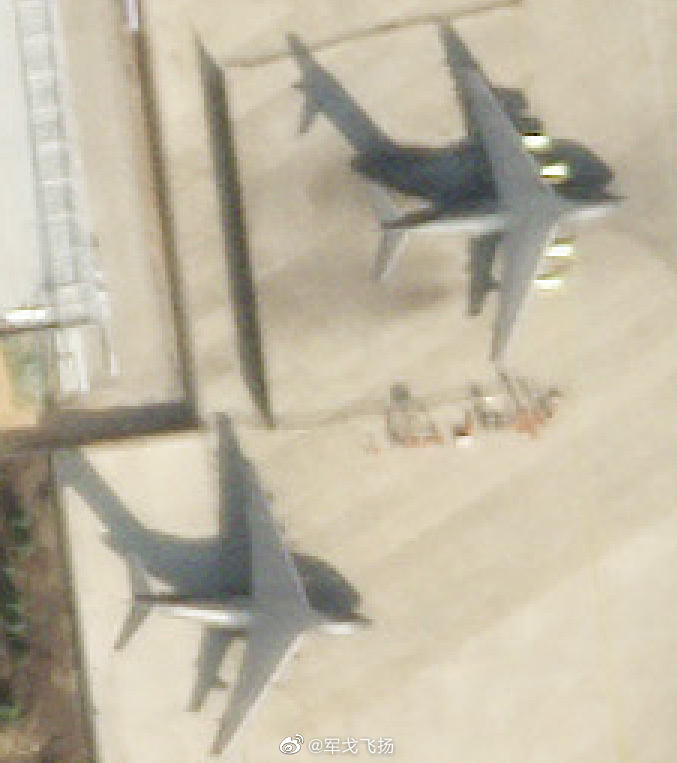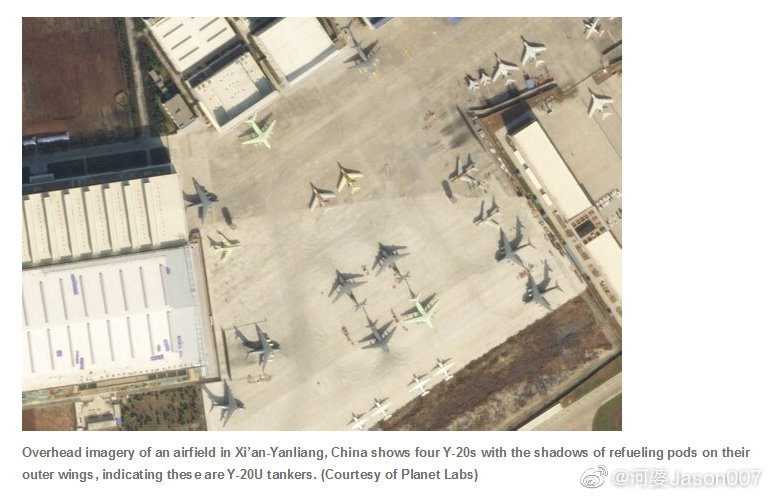Reduce overall weight of the aircraft.Y-20 have two third of the capacity of AN-22, fly faster and is up to date...
An-22 have retractable landing gear... don't know why would you put fixed undercarriage?
You are using an out of date browser. It may not display this or other websites correctly.
You should upgrade or use an alternative browser.
You should upgrade or use an alternative browser.
China's transport, tanker & heavy lift aircraft
- Thread starter Totoro
- Start date
You're correct and right. I should've specified that it's primarily a civilian gov't aircraft. For domestic and international emergencies and/or Humanitarian mission.Large mobility aircraft such as the An-22, An-225, and the C-5 Galaxy serve a niche mission where it's almost impractical+uneconomical to use multiple airframes (Il-76s, C-17s, or C-130s) to support the logistics/transport of a large amount of troops and equipment across long distances to a remote area in a timely manner (i.e. North America to the Middle East, or how large the continent of Russia is as well as how far the Soviet Eastern Block spanned). To put things into perspective, the Russian Air Force only has 11 operational An-22s and the USAF has 52 operational Galaxies as compared to the hundreds of Il-76s and C-17s that operate globally on a daily basis - if this doesn't say niche, I don't know what does.
Between the Y-20 and the Y-9, I just can't see why the PLA would require a larger airlift aircraft. As far as we know, the PLA are only interested in defending the Motherland as well as to project power into the South China Sea, and perhaps all the way out to the Second Island Chain or the Gulf of Aden - that's almost peanuts compared to the airlift requirements of the US DoD or even the British MOD. As such the PLA's mobility needs can be met by the Y-20 and the Y-9 (especially given Xi's recent military reforms to restructure the PLA Joint Logistics Support Force to effectively and efficiently respond to logistics and air mobility) to supply troops+logistics+heavy weaponry, and why I can't see the PLA requiring a mobility plane along the lines of a C-5 or An-225 to serve such a niche mission.
It also wouldn't make economical sense to devote a large amount of resources to produce a handful of planes to serve a specific niche mission, I just can't see the tactical advantage it would give. Building a plane that massive would also require new or retrofitted hangars to provide maintenance, runways lengthened and taxiways reinforced, managing completely new maintenance parts and spare logistics, readjustment of PLA operational doctrine... It'd almost be more cost effective sending a Transport Regiment of Y-20s! Its capacity might not be as large, but it provides so much more tactical and mobility flexibility to the front lines.
The role the Y-20 played in the COVID pandemic response both domestically and internationally is clear evidence that the PLA have their air mobility formula right, and why there isn't a need to develop something bigger.
Yes it might reduce weight, but it'll also produce a lot more aerodynamic drag. Additional thrust will have to be produced to overcome said drag, which increases fuel burn and as a result drastically cut into an aircraft's range. Case and point according to the Airbus Quick Reference Handbook, an A320 burns ~80% more fuel with its landing gear extended, and it also can't fly higher (and therefore faster).Reduce overall weight of the aircraft.
In that case we'll be talking about producing an even smaller amount of niche aircraft, which will increase production and operational cost. While responding to emergencies and humanitarian crisis ought be a non-profit operation, sustainability must be taken into account... and quite frankly the aircraft you're suggesting isn't sustainable at all.You're correct and right. I should've specified that it's primarily a civilian gov't aircraft. For domestic and international emergencies and/or Humanitarian mission.
Between BRI infrastructure (ports, airports, high speed rails.. etc) that will be built in the coming decades, Y-20s+Y9s+AG600 and other airlift resources, 075 LHDs and 003 aircraft carrier(s), as well as advancements in AI+5G+BeiDou satellite technology, China has multiple means to effectively provide aid to global humanitarian crisis and emergencies in a timely manner.
Yes it might reduce weight, but it'll also produce a lot more aerodynamic drag. Additional thrust will have to be produced to overcome said drag, which increases fuel burn and as a result drastically cut into an aircraft's range. Case and point according to the Airbus Quick Reference Handbook, an A320 burns ~80% more fuel with its landing gear extended, and it also can't fly higher (and therefore faster).
In that case we'll be talking about producing an even smaller amount of niche aircraft, which will increase production and operational cost. While responding to emergencies and humanitarian crisis ought be a non-profit operation, sustainability must be taken into account... and quite frankly the aircraft you're suggesting isn't sustainable at all.
Between BRI infrastructure (ports, airports, high speed rails.. etc) that will be built in the coming decades, Y-20s+Y9s+AG600 and other airlift resources, 075 LHDs and 003 aircraft carrier(s), as well as advancements in AI+5G+BeiDou satellite technology, China has multiple means to effectively provide aid to global humanitarian crisis and emergencies in a timely manner.
Not to mention, you can charter An-124 or even An-225 if you need it.
Even NATO did!
They even do retractable and semi retractable landing gears to save fuel and gain speed on helicopter...(to reduce noise too) but in any case, I'm not sure if you can gain something for a plane that large.Reduce overall weight of the aircraft.
For the size, Y-20 is in a sweet spot and can be to large for most payload, it's weight carrying is a must tho. The large volume can bring MBT by air but you rarely use it for that. The US air force even looked to fit a smaller diameter fuselage on the C-17 to save fuel because most of the time they don't use the volume capacity of the plane.
Why charter when you have the tech, expertise plus capital to build one yourself.Not to mention, you can charter An-124 or even An-225 if you need it.
Even NATO did!
Another poster has mentioned Semi-retractable landing gears.Yes it might reduce weight, but it'll also produce a lot more aerodynamic drag. Additional thrust will have to be produced to overcome said drag, which increases fuel burn and as a result drastically cut into an aircraft's range. Case and point according to the Airbus Quick Reference Handbook, an A320 burns ~80% more fuel with its landing gear extended, and it also can't fly higher (and therefore faster).
In that case we'll be talking about producing an even smaller amount of niche aircraft, which will increase production and operational cost. While responding to emergencies and humanitarian crisis ought be a non-profit operation, sustainability must be taken into account... and quite frankly the aircraft you're suggesting isn't sustainable at all.
Between BRI infrastructure (ports, airports, high speed rails.. etc) that will be built in the coming decades, Y-20s+Y9s+AG600 and other airlift resources, 075 LHDs and 003 aircraft carrier(s), as well as advancements in AI+5G+BeiDou satellite technology, China has multiple means to effectively provide aid to global humanitarian crisis and emergencies in a timely manner.
PROC need such a plane for & of it's own...transporting large object that don't fit inside Y-20.
Why charter when you have the tech, expertise plus capital to build one yourself.
It's not economical to do so as crash8pilot mentioned earlier.
I think we might be at a similar stage with regard to tankers compared to a couple years ago when the PLAAF and PLAN had almost no dedicated AEW&C aircraft, barely any MPA aircraft until the Y-8 and Y-9 airframes would get derivatives of it and the following mass production. Hopefully we will soon see the same crazy production rates we can see at Shaanxi at Xian.More Y-20U tankers being manufactured.




